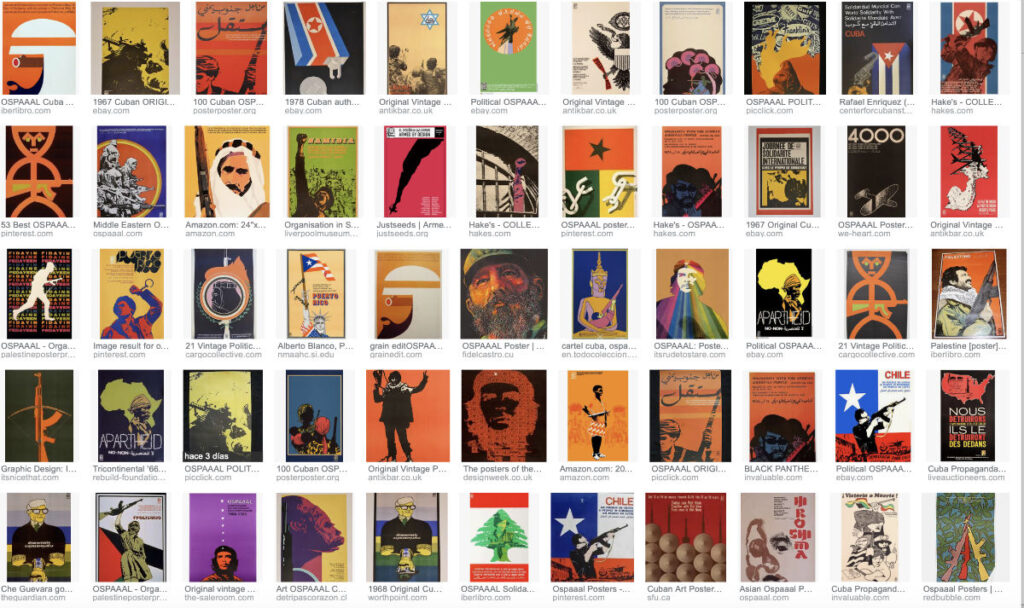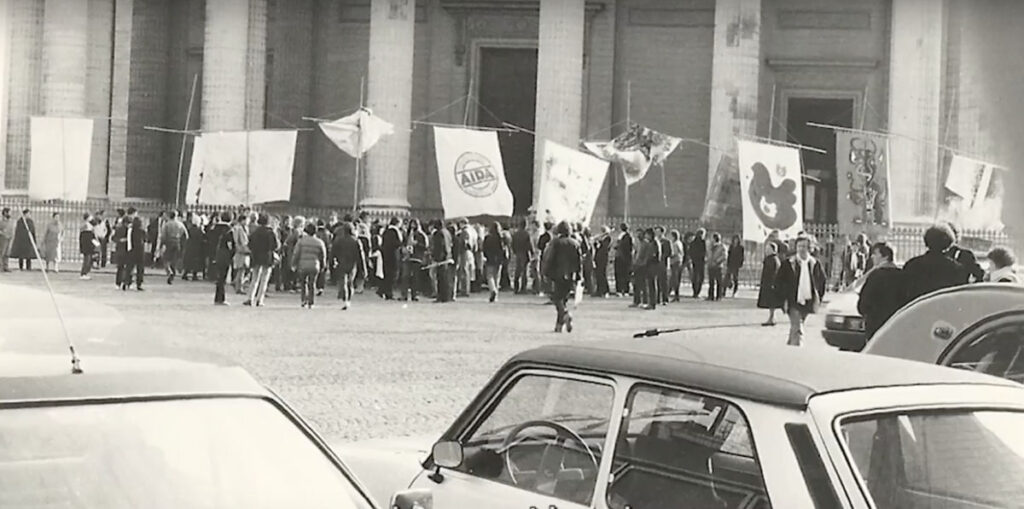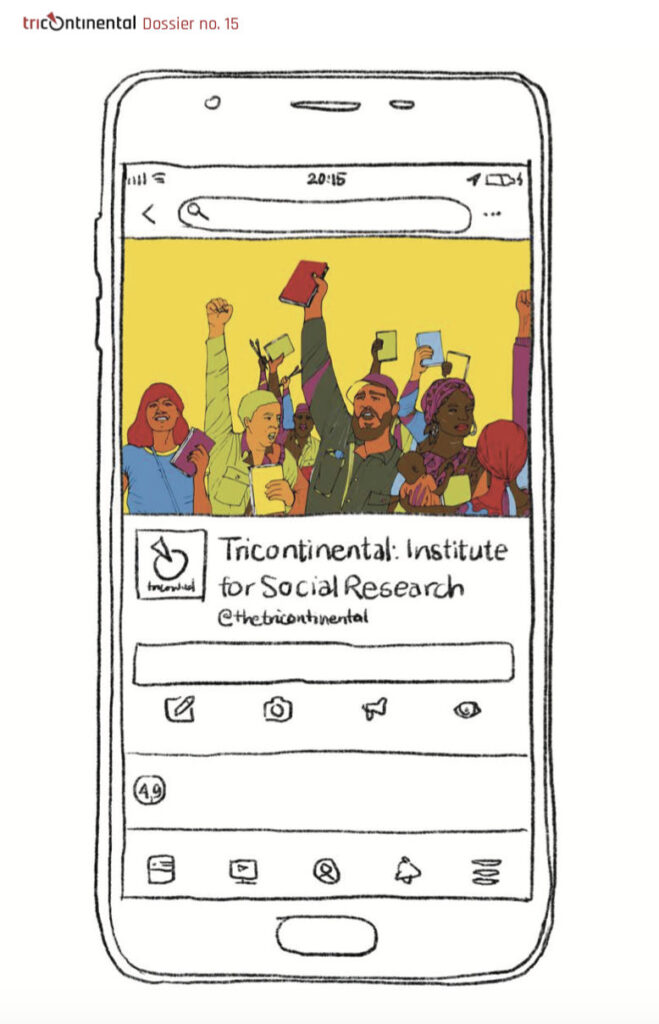Tricontinental configurations (and their deviations)
Transnational solidarity movements were fundamental vehicles for global circulation, fraternity and struggle during the Cold War, and determining factors in the shaping of the multicultural and global society, in which we live today. This concept designates a territory that is at the origin of key movements and important platforms for coordinating structural changes regarding organisation and governance as well as the geography of the Cold War. Reactivated in this context, it articulated a new imaginary of the world and of the cooperation between nations and continents. This was reinforced through the decolonising processes that multiplied after the Second World War and that were to form part of what was to become a position(ing) that challenged the Cold War bipolarity.

Hence, under the sign of solidarity, struggles were interconnected and internationalised, while at the same time creating a common imaginary and horizon. The configuration of the league of non-aligned countries made great use of the concept of solidarity between states to articulate a common policy (clearly visible in the foreign policy of the former Yugoslavia); the Tricontinental configured a model of solidarity that integrated the struggle for independence and the emancipation of peoples via defence with attack (through the armed and revolutionary struggle). The coordination of this front for emancipation and social justice prefigured and built at the same time what we call today the Global South.
This model of transnational cooperation and action not only meant effective collaboration between national liberation struggles, revolutionary forces and groups that fought for minorities (such as the Black Panther Party) (and with training, sending of militias, technical support), but also generated a horizon of imagination shared by multiple individuals from all over the planet, in which the visual and the performative acquired a determining role. The visual production (visual arts, graphic production, posters, film and photography, video) was a founding element for coordinating causes, objectives, fuelling the struggle, creating collective imaginations, hopes and desires, dissident genealogies, as well as for transmitting revolutionary memories

While this concept is still in use (though not as Third Worldism, or Tricontinentalism), it has since long been stripped of its revolutionary and emancipatory connotations, being re-appropriated in the name of the human rights and based on concepts closely linked to charity and fraternity (associated with the counter-insurgency movements developed to deactivate the revolutionary movements of the 60s and 70s). In this framework, in which artistic practices participated in the struggles, the solidarity of the past now seems to gain a prefigurative role in the light of the anti-racist struggles that have shaken the pandemic world. Hence, the neoconservative turn of today’s turbo-capitalism, coupled with the radicalisation of violence, has generated models of anti-racist struggle(s) that reactivate the model of tricontinental solidarity.

Bibliography
Berríos, María (2019), «Solidarity and Storytelling. Rumors against Enclosure»,
http://glossary.mg-lj.si/referential-fields/geopolitics-II/solidarity-2
Cristiá, Moira (2021), AIDA. Una historia de solidaridad artística transnacional (1979-1985), Buenos Aires, Ediciones Imagu Mundi.
Garland Mahler, Anne (2018), From the Tricontinental to the Global South. Race, Radicalism, and Transnational Solidarity, Duke University Press.
Gatti, Mauricio (1977), En la selva hay mucho por hacer, Barcelona, Centro de Información y Documentación en Barcelona del Tercer Mundo.
Hanna, Lani (2020), «Tricontinental’s International Solidarity. Emotion in OSPAAL as Tactic to Catalyze Support», Radical History Review, 136, January, pp. 169-184.
Khouri, Kristine y Salti, Rasha (2018), Past Disquiet : Artists International Solidarity and Museums in Exile, Varsovie : Muzem (Museum of Modern Art in Warsaw), Chicago : Chicago University Press.
Lebeau, Élodie (2021), «El Museo de la Solidaridad de la Unidad Popular al exilio (1971-1991).Una experiencia transnacional en tiempo de guerra fría cultural», Secuencia (108), septiembre-diciembre: e1835 doi: https://doi.org/10.18234/secuencia.v0i108.1835
Markarian, Vania (2004), «De la lógica revolucionaria a las razones humanitarias: la izquierda uruguaya en el exilio y las redes transnacionales de derechos humanos (1972-1976)», Cuadernos del Claeh, 89, pp. 85-108.
Matta, Roberto (1978), «Towards a Creative Sens of Solidarity», International Art Exhibition for Palestine, Beirut, Plastic Art Section, Unified Information, PLO, p. 6.
Piškur, Bojana (2016), «Solidarity in Arts and Culture. Some cases from the Non-Aligned Movement», en línea desde el 1 de octubre https://www.internationaleonline.org/research/alter_institutionality/78_solidarity_in_arts_and_culture_some_cas es_from_the_non_aligned_movement/
Pop-Mitic, Darinka (2018), «On Solidarity», Borderline-offensive, Bratislava, czkd, https://www.czkd.org/meta-content/uploads/2018/06/borderline-offensive-umetnicka-rezidencija-czkd.pdf
Salti, Rasha (2018), «Solidarity», Glossary of Common Knowledge, http://glossary.mg-lj.si/referential-fields/commons/solidarity
Solanas Fernando y Getino, Octavio (1969), «Hacia un tercer cine», Tricontinental, nº 13, enero, pp. 107-132.
Sontag, Susan, «Posters: Advertisement, Art, Political Artifact, Commodity, Michael Beirut, Jessica Helfand, Steven Heller, Rick Poynord, ed. (1999), Looking Closer 3, Allworth Press, New York, pp. 196-218
Stites Mor, Jessica y Suescun Pozas, María del Carmen (eds.) (2018), The Art of Solidarity, University of Texas Press.
Stites Mor, Jessica (2019), «Rendering Armed Struggle. OSPAAAL, Cuban Poster Art, and South-South Solidarity at the United Nations», Anuario de Historia de América Latina, 56, pp. 42-65.
Traverso, Enzo (2016), Left-Wing Melancholia. Marxism, History and Memory, Columbia University Press.
Vesić, Jelena y Pop-Mitić, Darinka (2019), «On Solidarity in Time . In Front of an Empty Wall, Looking at a Lost Image», springerin, 1, https://www.springerin.at/en/2019/1/solidaritat-in-der-zeit/
